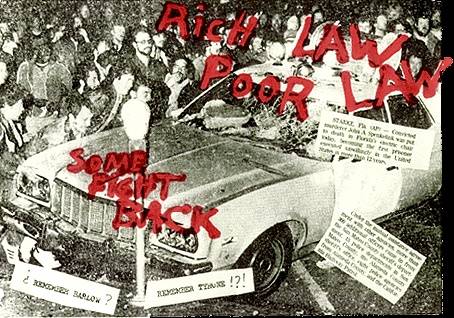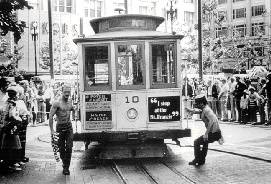The Bubble Bursts: Difference between revisions
(PC) |
m (Text replacement - "category:Gay and Lesbian" to "category:LGBTQI") |
||
| Line 26: | Line 26: | ||
[[HARVEY MILK A Reflection by Harry Britt | Prev. Document]] [[The Castro: The Rise of a Gay Community | Next Document]] | [[HARVEY MILK A Reflection by Harry Britt | Prev. Document]] [[The Castro: The Rise of a Gay Community | Next Document]] | ||
[[category: | [[category:LGBTQI]] [[category:1970s]] [[category:dissent]] | ||
Latest revision as of 07:09, 16 October 2018
Unfinished History
Leaflet from the White-Night Riots.
On May 21, 1979, the Dan White "Twinkie Verdict" was handed down. White received only a voluntary manslaughter conviction for the deaths of mayor George Moscone and supervisor Harvey Milk. That night, hundreds of citizens (gays, angry straights, punks, and others) rioted at City Hall, smashing windows, looting nearby stores, and burning over a dozen police cars.
Police retaliated later that night with their own riot. They stormed a bar in the Castro, brutally beating customers and passersby. Some individuals were placed under arrest and a defense fund was formed. Punk bands like the Offs and the Blowdriers played benefits. Later a photo of the burning police cars would grace the cover of the Dead Kennedys' first album.
It is important to remember that two men were killed, one straight, and the mayor, no less, and that there were underlying pressures contributing to that outburst of violence. The Dan White verdict may have sparked the White Night, but other factors fanned its flames.
In his book, Gayslayer!, Warren Hinckle said, "1978 and 1979 were the most emotionally devastating years in San Francisco's fabulously spotted history." Social and economic pressures arose in a city of 700,000 which had seen the influx of 100,000 homosexuals over a decade. Violence against gays (underreported in the mainstream media) increased throughout the '70s. Many gay men carried whistles to blow loudly in case of attack. According to Hinckle, "In an average month 30 to 40 muggings and stabbings by gangs of street toughs preying on gays are reported." There were also occasional unsolved murders stemming from the South of Market pick-up scene. No one knew whether the killers were queer or straight. Many folks regard 1978 or 1979 as the point where the San Francisco gay party of the '70s peaked and started sliding downhill.
"It started crashing down with Anita Bryant," says Jack Fertig. "And people said, "We've got to get serious, and we can't be a bunch of whackos, we've got to be responsible." And that basically, Anita Bryant really pushed a lot of people out of the closet. We developed a political machinery."
The San Francisco gay world was going through its adolescent phase. One of the less charming characteristics of adolescents is their tendency toward cliquishness as a means to define their world. There was also massive gay population growth, and perhaps due to the sheer overwhelming numbers, many people retreated a bit. Gay life became more factionalized and fragmented. As San Francisco lurched into the '80s, the sense of community that had defined gay life in the early '70s seemed to get buried under a pile of special interests.
-- Black Sheets' 'magazine
Gay men turning a cablecar at the end of its line.


